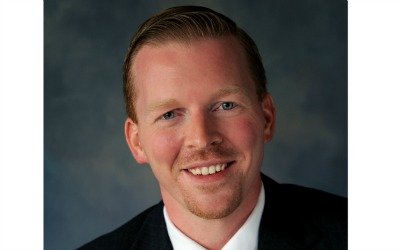Profitability is the main key to business success. Some analysts say right now is as tough a time as any to be an independent bicycle dealer (IBD). The industry has been on the decline as of late. Since 2000, the number of IBD shops has almost been cut in half. If you don’t want to get left in the dust, take notes from some of the industry’s most notable experts to get pedaling down the path to a more profitable business this year.
Tip 1: Improve Your Customer Service | Jay Townley
According to Jay, bicycle shop owners must sit down and consciously think of what they can do to welcome everybody into their shop. Many bicycle shops have gained a reputation over the years of being exclusive to a certain demographic – mostly middle-aged men who have been avid cyclists for a long time. By not catering to a bigger audience, shop owners are leaving a lot of opportunities (and money) on the table.
For instance, women make up over 50% of the U.S. population. Greeting a woman as she walks into your store can have a big positive impact. There is also data that suggests up to 55% of potential customers who leave a store without buying a bike went to another bike shop and purchased one. This could be 4-5 shoppers per day in a typical store and an extra bike sale per day.
Action Steps: Have an employee (preferably a female) greet every customer as they walk into your store. Engage these customers in their buying process, whether they are a seasoned cyclist or a first-time buyer.
Jay Townley is the co-founder and partner of Gluskin Townley Group, a consulting firm with over 75 collective years of experience in the bicycling, research and retail industries. Find out more about Jay here: http://www.gluskintownleygroup.com/
Tip 2: Adapt to What Is Happening in the Market | TJ Juskiewicz
Shop owners should be aware that it takes much more than offering a brand and traditional advertising to be successful. More and more options are becoming available in the online marketplace. Even the major brands are offering products online. But not everything can be replicated with an online buying experience. Service is easily the most important aspect of the purchasing experience that cannot be delivered over a website.
New bike owners need someone to assemble their bike, recommend and offer accessories, and provide future tune-ups and service work. Building long-term relationships with your customers is the only way to get them coming back to your shop for these services.
Action Steps: Be active in your community so people think of your shop for future service needs, even if they originally bought the bicycle online.
TJ Juskiewicz is the director of RAGBRAI, a seven-day bicycle ride across the state of Iowa. Heading into its 45th year, RAGBRAI is the oldest, largest and longest recreational bicycle touring event in the world. Learn more about TJ and the ride here: http://ragbrai.com/
Tip 3: Consider Taking Advantage of New Trends & Products | Jonathan Weinert
One growing product category in North America the past few years is electric bikes. There are even many exclusive eBike dealers in the U.S. that have been successful. Whether you want to start a new shop geared exclusively toward eBikes or add them to your existing product line, there are a few things to consider. Most consumers who are looking to purchase an electric bike are seeking out dealers to help them. The product is still new, it is more complicated than a traditional bicycle and it is more expensive than a lot of traditional bikes.
Customers want to be sure they are informed before making this substantial investment. They also have service needs that must be met, so establishing a relationship with a service shop is important to this customer.
One bit of warning – dealers who have tried to sample this product line by carrying one or two models in their store are not as successful as those giving eBikes prominent displays and being fully invested in the product line.
Action Steps: Determine if carrying electric bicycles is a worthwhile venture for your store. There are a lot of things to consider, but tapping into this newer trend may mean reaching parts of the population that have not been a bike shop customer for 10 or 20 years and want to return to the activity.
Jonathan Weinert is the Marketing Manager with Bosch eBike Systems. Find out more about them here: http://www.bosch-ebike.com/en/.
Tip 4: Educate Yourself About New Markets | Ray Verhelst
According to Ray, there are two distinct markets for eBikes. One is traditional IBD’s looking to add eBikes to their existing shops. The other is IBD’s that sell eBikes exclusively, commonly known as eIBD’s. eBikes are growing in popularity, but dealers should be aware of the barriers to entry. There are different insurance requirements, financing issues to work through and extensive technical product training, just to name a few. Those dealers that make the leap will gain access to an enthusiastic customer base of riders who are excited and willing to learn about making the most of their investment.
One other new market that is showing signs of growth is the mobile service market. Gone are the days where you must load your bicycle onto your bike rack and take it into the local service shop. Mobile service shops will come to you directly. And they offer many of the same traditional services like new bike assembly, bike fitting, tires, suspension, and so on.
Action Steps: Figure out which new products and services you can add to make your existing offerings more diverse.
Ray Verhelst is Director of the Electric Bike Association, which is the only business to consumer organization within the North American Bicycle Industry dedicated to the eBike community. Learn more about Ray and the association here: http://www.electricbikeassociation.org/.
Tip 5: Evolve as a Retailer | Pat Hus
Consumers are more in control of how they buy and take delivery of products in today’s retail environment. They shop from their phones or tablets and conduct research on products they want to buy. They want to check on inventory status online before driving to the store itself. Progressive bike shops are looking to build their own apps for mobile devices, but this is a steep investment in dollars and time for a smaller dealer.
Instead, look to various apps already developed that are building support in various communities. These apps are embracing new customers and bike enthusiasts in your community by showing them where to ride, what type of gear they need and connects them with other enthusiasts in their community. Small stores should look to support such apps and gain new customers from it.
Action Steps: Figure out how to best leverage technology and an evolving buying experience to gain new customers.
Pat Hus is VP & Show Director at Interbike, the largest bicycle industry trade show in North America. Learn more about Pat and Interbike here: http://www.interbike.com/
Tip 6: Focus on the Life of a Cyclist, Not the Initial Sale | Donny Perry
The bicycle retail industry has been focusing on the wrong thing, says Donny. Instead of being focused on the initial sale of a bicycle, shop owners should be more focused on bringing that customer back for everything else they will need in their life cycle as a bike shop customer. That customer will need to come back for annual tune-ups, eventual service on the bike, accessories and upgrades over time.
Shop owners should look to develop a system to increase their customer’s awareness of reasons to come back to the store. Then the key is to drive revenue on items the retailer either creates or controls the distribution channel. Maybe that’s service work or an accessory line they produce. The profit margins on items the shop owner controls and creates are always going to be the healthiest.
Action Steps: Implement a customer relationship management (CRM) system and use it to automate efforts to drive customers back to your shop. Focus on sales where you create or control the distribution. Consider the sale of a new bike the beginning of a long customer relationship, not a consumer interaction that is one and done.
Donny Perry is the author of “Leading Out Retail: A Creative Look At Bicycle Retail And What All Retailers Can learn From It”. You can learn more about Donny and his book here: http://www.donnyperry.co/.
Tip 7: Plan to be Profitable and Implement a System to Achieve It | Eric Levenhagen
Many small business owners expect their business be profitable. They work towards that goal by driving sales month after month and trying to keep an eye on cash while keeping costs as low as they reasonably can. Some owners use tools like a Profit & Loss Statement to manage these costs, while many others must constantly look at their bank balance to judge their success. These are outdated ways to manage your business finances and won’t help you maximize profits.
First, shop owners should flip the old formula of Sales – Expenses = Profit. This formula leaves the most important thing in your business, your profits, in the least important position (at the bottom). Almost like you’re expected to live off leftovers. Instead, flip the formula like this: Sales – Profit = Expenses. Now you’ve moved profit into a place of priority; your profit is first. Next, instead of working from financial reports that are 3-5 pages long, learn to consolidate the most important financial info you need in your business to one page. It will be easy to look at, easier to spot trends, and figure out where your business needs your attention the most in real time.
Action Steps: Implement a cash management system that puts your profit first. Streamline your financials to look at what is most important. Lean on your accountant or hire a good financial coach to hold you accountable.
Eric Levenhagen is the Managing Member of ProWise Financial Coaching. Learn more about Eric and his firm here: www.prowisefinancial.com.
Now don’t just let all this knowledge sit in your head without action. The only way you really make this next year the most profitable year of all is to do something with what you’ve learned! Implement an idea, measure the results, and adjust as necessary. It’s the only sure way to move forward.
Eric Levenhagen is a Certified Public Accountant and was one of the first thirty tax professionals in the country to earn the Certified Tax Coach designation. He is the managing member at ProWise Financial Coaching where he specializes in helping small business owners minimize their taxes, maximize their profits and enhance their life through entrepreneurial abundance. In 2015, Eric was selected by his colleagues as the Certified Tax Coach of the Year. Eric is also a contributing author to the best-selling book, Secrets of a Tax Free Life. Learn more at www.prowisefinancial.com











